23 Delicious Egyptian Foods You Have to Try
Wondering what to eat in Egypt? Here’s your go-to guide to the most delicious Egyptian foods to try on your trip.
I’ll be honest—I didn’t go to Egypt expecting to fall in love with the food.
It’s not a cuisine I knew much about, and compared to foodie hotspots like Thailand or Japan, Egyptian food doesn’t get nearly enough credit. But after just a few meals, I quickly realized it’s another reason why Egypt is absolutely worth visiting.
Whether you’re visiting the newly opened Grand Egyptian Museum in Cairo, taking a day trip to Alexandria, or cruising along the Nile, food is a huge (and delicious) part of the experience.
In this guide, I’ll walk you through exactly what to eat in Egypt—from must-try traditional Egyptian dishes to street snacks, desserts, and drinks you’ll want to sample at least once.
This blog post is all about famous Egyptian foods
Table of Contents
What Traditional Egyptian Foods Are Really Like
If you’ve never tried Egyptian food, you might be wondering what to expect. I felt the same way—I had no clue what a typical meal looked like when I first arrived.
Here’s what I picked up pretty quickly:
- It’s simple but satisfying. Most traditional Egyptian foods are made with basic ingredients like beans, lentils, rice, and herbs—but they’re hearty and full of flavor.
- It’s hearty and home-style. Portions are generous and perfect after a day exploring places like Coptic Cairo or the Khan el-Khalili bazaar.
- Vegetarians will be just fine. Many popular Egyptian dishes—like koshari, ful medames, and ta’ameya—are naturally vegetarian (sometimes even vegan).
- Bread is everything. Aish baladi (Egyptian flatbread) shows up at almost every meal. You’ll use it to scoop, dip, and soak up every last bit.
- It’s not spicy, just bold. Expect lots of garlic, cumin, coriander, lemon, and fresh herbs, but not much heat.
I tried everything from street food in Cairo to big, celebratory dishes after visiting some of the most beautiful mosques in Egypt. Some things I loved, others weren’t for me—but tasting my way through Egyptian cuisine turned out to be one of the best parts of the trip.
So if you’re wondering what to eat in Egypt, this guide has you covered. Let’s dig into the most delicious Egyptian foods you absolutely have to try.

What to Eat in Egypt: A Beginner’s Guide to Egyptian Foods
Below are the most popular Egyptian foods I tried during my trip. I’ve organized everything by category, so you can easily find the foods you’re most excited to try.
Click below to jump straight to any section:
- Must-try Egyptian Dishes
- Traditional Egyptian Desserts
- Popular Drinks in Egypt
- Vegetarian Food in Egypt
- Drinking Age in Egypt
Must-Try Egyptian Foods You’ll Find Everywhere
1. Koshari – Egypt’s National Dish
If you try just one thing in Egypt, let it be koshari—the beloved national dish of Egypt.
This filling street food favorite brings together rice, lentils, pasta, chickpeas, crispy fried onions, and a tangy tomato-vinegar sauce. It’s hearty, full of flavor, completely vegan, and usually costs less than $1.
You’ll find it everywhere—from tiny local stalls to famous spots like Abou Tarek and Koshary El Tahrir. Whether you’re craving comfort food or want a true taste of everyday Egyptian cuisine, koshari is a must.

2. Ta’ameya – Egyptian Falafel
Falafel lovers, take note—ta’ameya might just ruin regular falafel for you. This Egyptian falafel is made with fava beans instead of chickpeas, giving it a softer texture and a vibrant green color from all the fresh herbs.
Crispy on the outside and tender inside, ta’ameya is a staple of vegetarian Egyptian food. You’ll see it everywhere—stuffed into breakfast sandwiches, served as part of a mezze platter, or even on the McDonald’s menu as the McFalafel.
3. Molokhia – Egypt’s Most Controversial Green Dish
Molokhia is one of the most iconic—and divisive—traditional Egyptian foods. Made from finely chopped jute leaves cooked in a garlicky broth, it’s typically served with rice or baladi bread, and sometimes paired with chicken or rabbit.
The taste is rich and loaded with garlic, but the texture is where people split. It’s slimy—kind of like okra—and definitely not for everyone.
I first tried it while eating near the Giza Pyramids and just couldn’t get into it. But my brother? He was obsessed and ordered it every chance he got.
4. Ful Medames – The Most Popular Egyptian Breakfast
Ful medames—or just “ful”—is a creamy fava bean stew that’s been fueling Egyptians for centuries. Seasoned with lemon, cumin, and olive oil, it’s served warm with baladi bread and is one of the most popular Egyptian breakfast foods you’ll find.
Eat it in a sandwich or with eggs and ta’ameya for a truly local start to your day.
It’s simple, hearty, and a staple of traditional Egyptian food. From humble street carts to well-known spots like Gad and Felfela, ful is everywhere. My hotel in Cairo even served it every morning, and I didn’t complain.
5. Baladi Bread – The Heart of Every Egyptian Meal
Forget forks—baladi bread is how most Egyptians eat. This warm, whole wheat flatbread is soft, fluffy, and perfect for scooping up dips, wrapping ta’ameya, or soaking up the spicy tomato sauce from your koshari bowl.
You’ll find it everywhere—sold in stacks at local bakeries and served with nearly every dish. Honestly, I don’t think I went a single day in Cairo without eating this classic Egyptian bread, and I wasn’t mad about it.
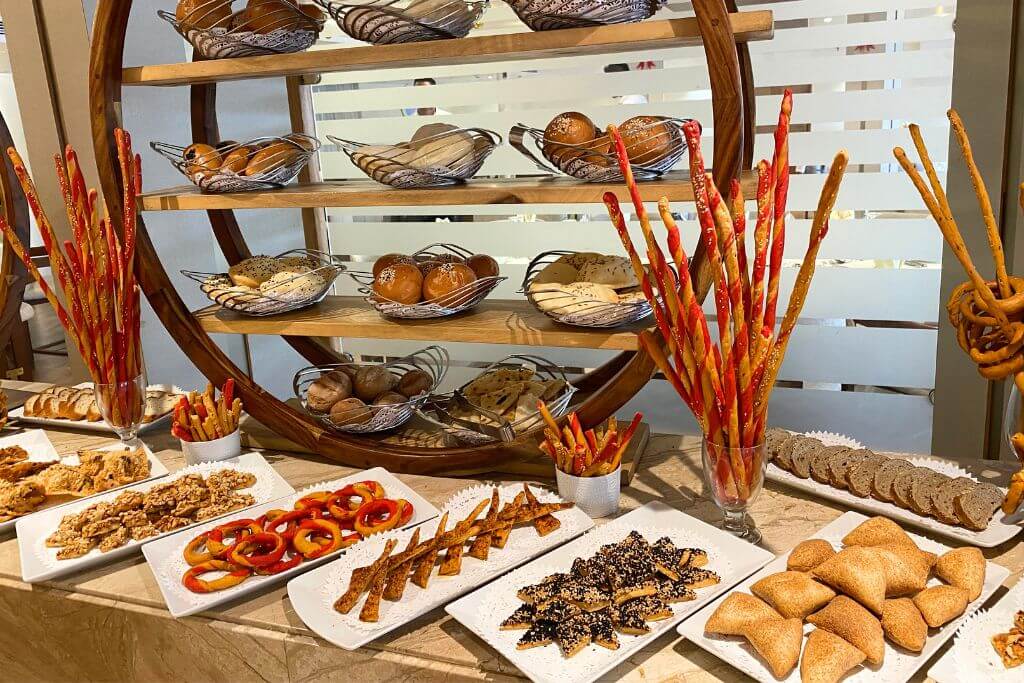
6. Egyptian Dips – Tahini, Baba Ghanoush & More
Right after baladi bread, the next best part of any Egyptian meal is what you dip it into.
Egyptian dips are some of the most underrated stars of the local food scene. I found myself ordering mezze-style meals again and again, just for the dips. Here are a few favorites:
- Tahini – Creamy sesame paste mixed with lemon, garlic, and salt. Served with everything from grilled meats to falafel—or just with bread as a starter.
- Baba Ghanoush – Roasted eggplant blended with tahini and citrus. Smoky, silky, and totally addictive. I ordered this at nearly every restaurant.
- Hummus – Surprisingly rare in Egypt! While it’s popular elsewhere in the Middle East, Egyptians tend to stick to tahini and baba ghanoush.
Pro Tip: Many local restaurants serve a tray of dips and salad before your main course—often complimentary. Perfect if you’re starving and waiting for that ful, hawawshi, or grilled kofta to arrive.
7. Mahshi – Stuffed Vegetables with Herbed Rice
Mahshi means “stuffed” in Arabic, and it’s one of the coziest, most comforting dishes in traditional Egyptian food. It usually features zucchini, bell peppers, eggplant, or grape leaves filled with herbed rice, then slow-cooked in a rich, garlicky tomato sauce.
You’ll find mahshi in many restaurants serving homestyle Egyptian cuisine, but honestly—it’s best when homemade. If you’re vegetarian or just craving something lighter after all the grilled meats, mahshi is a must-try vegetarian Egyptian dish.
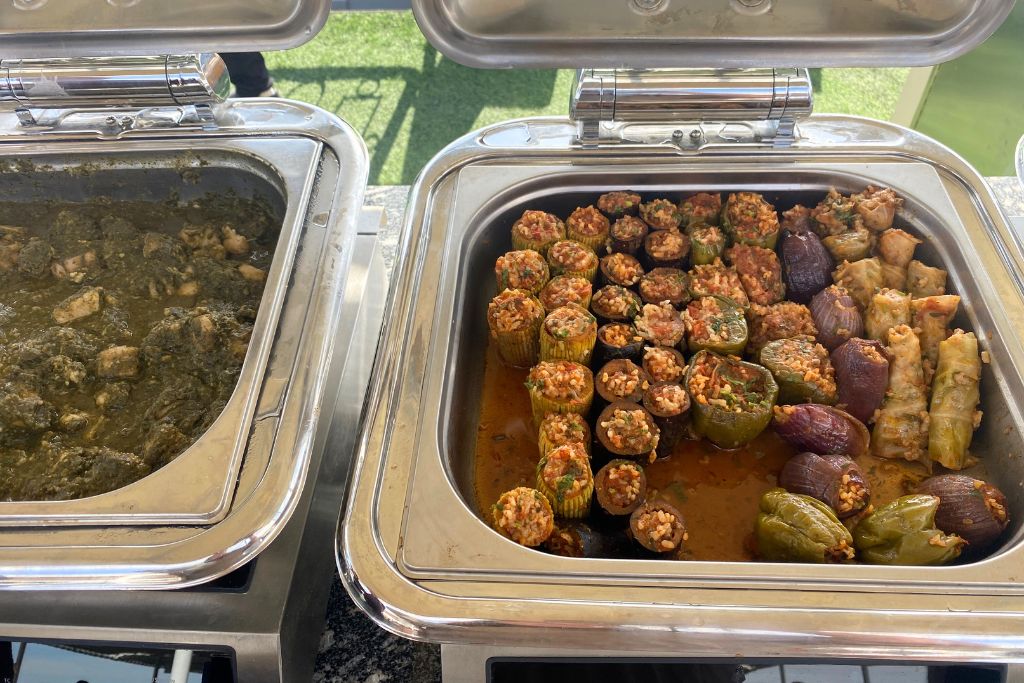
8. Hamam Mahshi – Stuffed Pigeon
Yes, you read that right—stuffed pigeon. Hamam mahshi is a beloved Egyptian delicacy, made from young, tender pigeons filled with spiced rice or cracked wheat, then roasted until golden and juicy.
I gave it a try, and while it wasn’t my favorite (a little too bony and rich for me), I’m still glad I tasted it. If you’re feeling adventurous and want to try a truly traditional Egyptian dish beyond the usual street food, you’ll find hamam mahshi on the menu at many restaurants in Cairo.
9. Fattah – A Feast of Meat, Rice, and Bread
If you’re into bold, hearty meals, fattah is one of the most traditional Egyptian foods to try. It’s often served during big celebrations like Eid and weddings—but you can find it year-round in local restaurants.
This layered dish combines crispy fried baladi bread, fluffy rice, and chunks of tender beef or lamb, all topped with a garlicky tomato-vinegar sauce. Trust me, this is not a “light bite,” so come hungry!
10. Shawarma – A Middle Eastern Favorite
Shawarma isn’t unique to Egypt—it’s popular across the Middle East and similar to the Turkish doner kebab or the Greek gyro—but it’s easily one of the most loved Egyptian street foods.
Thinly sliced beef or chicken is slow-roasted on a vertical spit, shaved into flatbread, and topped with garlic sauce, tahini, pickles, and sometimes fries.
I loved grabbing one between sightseeing stops or after checking out some of the best places to visit in Cairo. It’s the perfect Middle Eastern wrap when you need something fast but delicious.
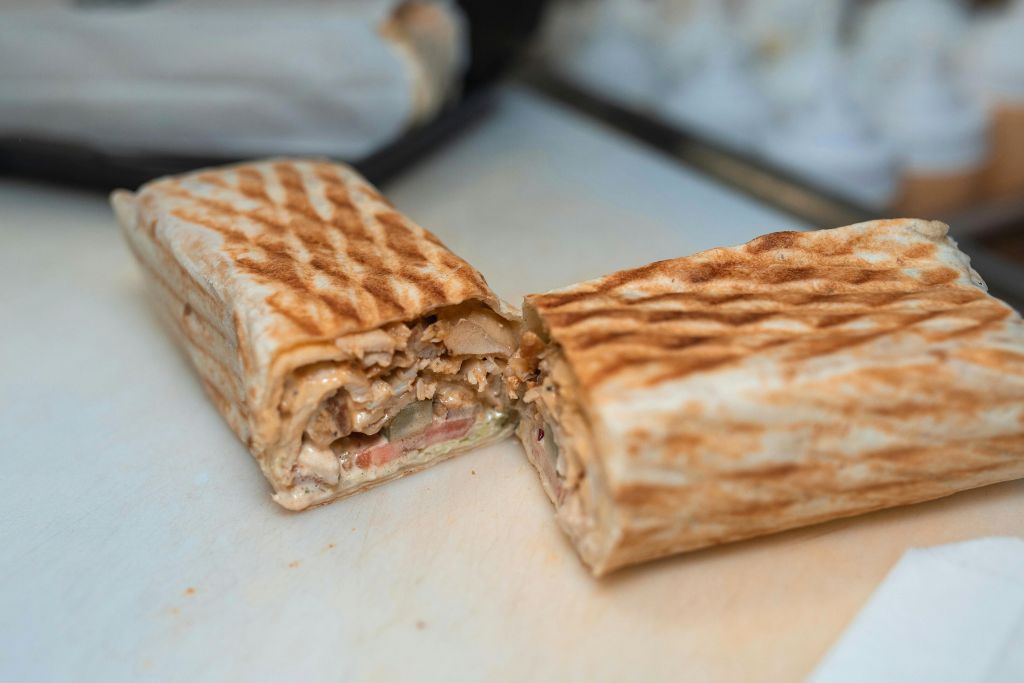
11. Kebda Eskandarani – Spicy Liver from Alexandria
I get it—liver isn’t for everyone. But Kebda Eskandarani, a spicy beef liver dish from Alexandria, is one of the most beloved and boldest Egyptian street foods out there.
Sautéed with garlic, chili, and green peppers, it’s packed with heat and flavor. You’ll find it stuffed into sandwiches or served with rice, lemon, and warm baladi bread on the side.
Even if you’re unsure about liver, this Alexandrian street food might just surprise you. And if you’re planning a day trip from Cairo to Alexandria, this local favorite is a must-try at its source.
12. Kofta and Kebab – Grilled Egyptian Meat Skewers
If you’re craving grilled meat in Egypt, kofta and kebab are must-tries. Kofta is made from minced beef or lamb mixed with spices and shaped onto skewers, while kebab uses marinated meat chunks grilled until tender and smoky.
You’ll find them at any kababgy (local grill house), especially in Cairo. Served with rice, tahini, and warm baladi bread, these are some of the best foods in Egypt for meat lovers—and a staple on nearly every Egyptian food menu.
13. Feteer – Flaky Egyptian “Pizza”
Feteer (also spelled fiteer or meshaltet) is a buttery, flaky Egyptian pastry that deserves way more international attention. It’s made from ultra-thin layers of dough folded and baked until golden, crispy, and melt-in-your-mouth delicious.
It comes in all forms—plain, sweet (with honey, sugar, or jam), or savory (stuffed with meat, cheese, or vegetables). Some call it “Egyptian pizza,” but honestly, that doesn’t do it justice.
I loved having feteer for breakfast in Egypt, but you’ll find locals enjoying it any time of day. It’s one of those traditional Egyptian foods you definitely don’t want to miss.
14. Hawawshi – Spiced Meat Stuffed Bread
Hawawshi is Egypt’s answer to a meat pie—spicy, juicy, and straight from the grill. Ground beef or lamb is mixed with onions, garlic, and warm spices, then stuffed into baladi bread and baked until golden and crispy.
It’s hot, greasy, and totally satisfying. A true Cairo street food staple, you’ll find hawawshi at street stalls and local favorites like Hawawshi El Refaey.
15. Tajin – Egyptian Clay Pot Stews
Tajin (or tagine) isn’t just one dish—it’s a whole style of clay pot cooking. Meats, vegetables, and grains like rice are slow-cooked together in earthenware pots, allowing the flavors to meld into something rich, comforting, and deeply satisfying.
Some versions are vegetarian, while others feature lamb, beef, or even camel.
You’ll find Egyptian tajin everywhere, but it’s especially popular in southern cities like Luxor and Aswan. If you’re wondering what to eat in Egypt for that cozy, homemade feel, tajin is exactly what you’re looking for.
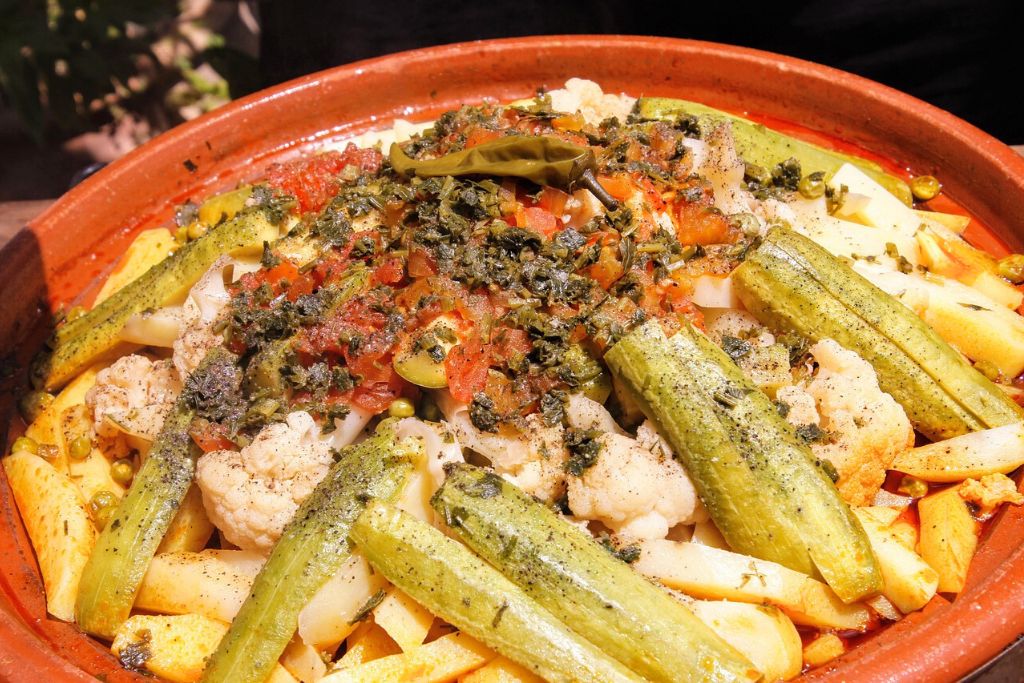
Bonus Egyptian Foods Worth Trying
Already checked off the classics? Here are a few more traditional Egyptian dishes worth keeping an eye out for:
- Macarona Bechamel – Egypt’s take on lasagna, made with pasta, minced meat, and creamy béchamel sauce.
- Feseekh – Salted, fermented fish eaten during Sham El Nessim. It’s pungent, salty, and definitely an acquired taste—not for the faint of heart!
- Moussaka (Musaqa’a) – Layers of eggplant, tomato, and sometimes minced meat or okra. A great option if you love bold, Mediterranean flavors.
- Bamya – A cozy Egyptian comfort food made with okra and tender meat in a garlicky tomato sauce. Best enjoyed with rice or baladi bread.
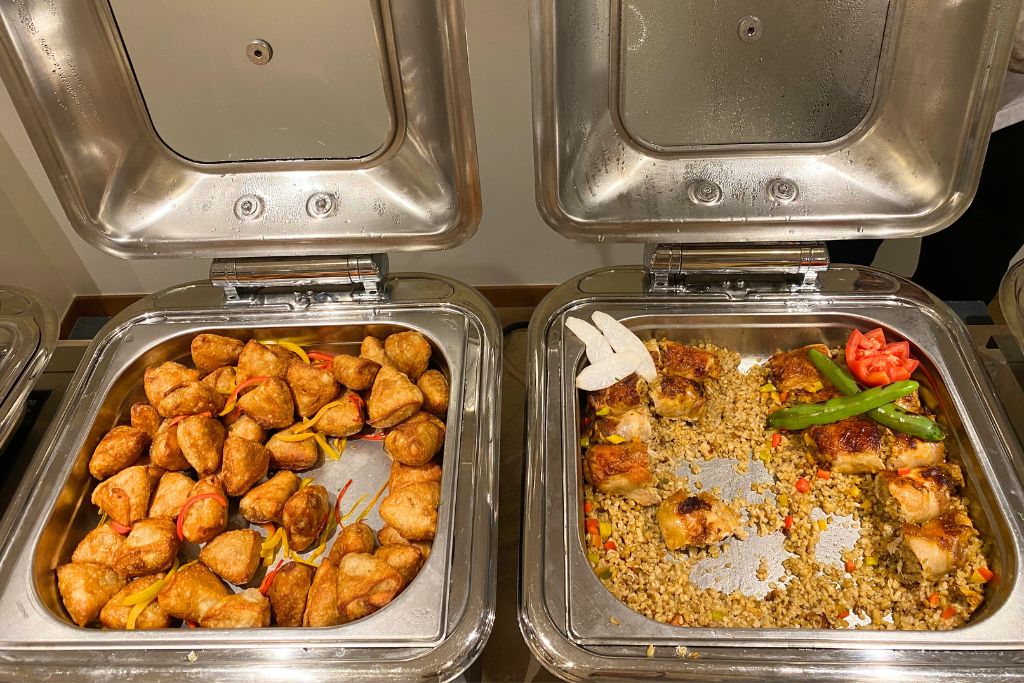
Traditional Egyptian Desserts You’ll Love
If you’ve got even the tiniest sweet tooth, you’re going to fall in love with traditional Egyptian desserts. From sticky semolina cakes to syrup-drenched pastries, Egyptian food doesn’t hold back on the sugar.
16. Halawiyaat (Arabic Sweets Platter)
One of my favorite food traditions in Egypt is the post-meal dessert platter—halawiyaat, or assorted Arabic sweets. You’ll find them in local bakeries, Cairo cafés, or even served at homes and hotels, especially on Nile cruises.
Here are a few classic sweets you’ll almost always find in a halawiyaat box:
- Konafa (or Knafeh) – Shredded phyllo pastry stuffed with nuts or cream and soaked in syrup. Crunchy and gooey in the best way.
- Basbousa – A syrup-soaked semolina cake, often topped with coconut or a single almond.
- Baklava – Flaky phyllo layers with crushed nuts, lightly sweetened. Lighter than the Turkish or Greek versions and my personal favorite.
- Zalabia – Fried dough balls soaked in syrup. Think Egyptian-style doughnut holes.
- Balah El Sham – Crispy, syrup-drenched dough sticks, kind of like baby churros.
- Ka’ak & Ghorayeba – Traditional Eid cookies. Ka’ak is crumbly and stuffed with date paste, while ghorayeba is buttery and melt-in-your-mouth soft.
Where to buy them: My go-to spots in Cairo are El Abd Bakery and Mandarine Koueider. You can get a full mixed tray for just a couple of dollars—and yes, you can keep it all for yourself. I won’t judge.
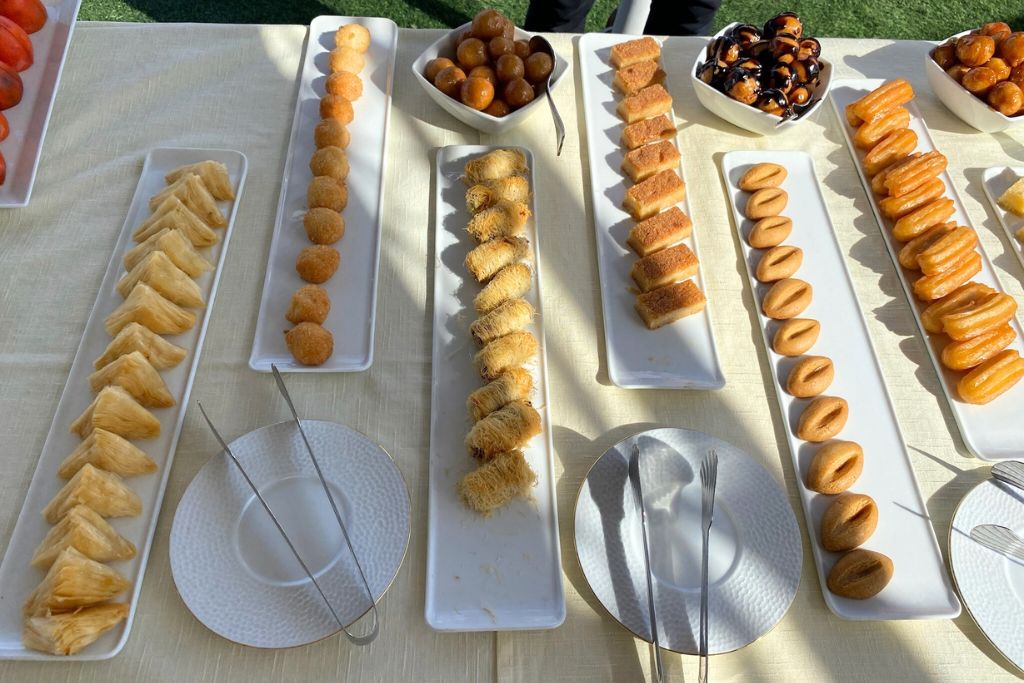
17. Roz Bel Laban – Egyptian Rice Pudding
Okay, confession time: I’ve never been a huge fan of rice pudding. And even though roz bel laban is beloved across Egypt, it didn’t quite win me over.
Still, you’ll see this Egyptian dessert everywhere—and many locals consider it the ultimate comfort food. It’s made with soft-cooked rice, milk, and sugar, sometimes flavored with rose water or vanilla, then chilled and topped with crushed pistachios.
If you’re into creamy, lightly sweetened desserts, give Egyptian rice pudding a try. It might be your thing, even if it wasn’t mine.
18. Om Ali – Egypt’s National Dessert
Now this one did win me over. Om Ali is often called Egypt’s national dessert, and it’s basically a dreamy, Egyptian-style bread pudding—only lighter, milkier, and way better.
It’s made with puff pastry or torn bread soaked in sweetened milk, then baked with coconut, raisins, and nuts until golden and bubbling. I even had one version that was brûléed on top and served with vanilla ice cream. Absolute heaven.
If you try just one traditional Egyptian dessert, let it be Om Ali.
19. Qatayef – Ramadan’s Sweetest Street Snack
If you’re visiting Egypt during Ramadan, you have to try qatayef. These mini stuffed pancakes are filled with sweet cheese or crushed nuts, folded into half-moons, and either fried or served fresh with syrup.
They’re soft on one side, crispy on the other, and totally addictive. I loved grabbing them hot off the street carts after sunset—they were always the first thing to sell out.
Popular Drinks in Egypt
After eating your way through Egypt’s famous foods, you’ll definitely need something refreshing to sip—especially in that desert heat! From classic herbal infusions to rich, creamy treats, here are some of the most popular drinks in Egypt you’ll want to try:
20. Egyptian Coffee (Ahwa)
Wondering what to drink in Egypt to start your day like a local? Go for ahwa, or Egyptian coffee. It’s thick, strong, and unfiltered—very similar to Turkish coffee—with a layer of grounds at the bottom.
Order it saadah (unsweetened), mazboot (lightly sweet), or ziyada (extra sweet), depending on your taste. You’ll see locals sipping it throughout the day in traditional cafés or chatting on street corners, especially in places like Khan el-Khalili.
Pro Tip: Don’t stir it, and definitely skip the last sip—it’s all sediment!
21. Tea (Shai) – Egypt’s Favorite Drink
Shai, or black tea, is hands-down Egypt’s favorite drink. It’s strong, often very sweet, and usually served with mint or a squeeze of lemon.
If you’re after something lighter, try karkadeh—a vibrant red hibiscus tea that’s served hot or cold. It’s especially popular in Upper Egypt, like Luxor and Aswan, and it’s packed with antioxidants too.
22. Sugarcane Juice (Asab)
Need a quick way to cool down while wandering the streets of Cairo? Grab a glass of asab, or freshly pressed sugarcane juice—a favorite among locals and one of the most refreshing traditional Egyptian drinks.
Vendors press the juice right on the spot using tall sugarcane stalks, serving up a light, grassy-sweet drink that’s perfect for staying hydrated in the heat. You’ll find stalls all over the city, especially in busy Cairo neighborhoods like Zamalek and Giza.
It’s cheap, energizing, and a must-try—especially if you’re visiting during Egypt’s hottest months.
23. Sahlab – Egypt’s Creamy Winter Drink
Sahlab is a beloved Egyptian winter drink—warm, creamy, and just the right amount of sweet. Made by thickening milk with starch or powdered orchid root, it’s usually flavored with vanilla and topped with pistachios, shredded coconut, and raisins.
You’ll find it at cafés and street stalls once the evening chill sets in. It’s one of my favorite drinks in Egypt—comforting, slightly sweet, and perfect when you’re winding down after a day of exploring the top things to do in Cairo.
Is It Easy to Find Vegetarian Food in Egypt?
Honestly? Vegetarian food in Egypt is everywhere—and it’s some of the tastiest I’ve had on my travels. I’m not even vegetarian, but I ended up eating meat-free most days without trying. That’s how common and flavorful plant-based Egyptian dishes are.
A big reason is Egypt’s Coptic Christian fasting traditions, which often involve a fully vegan diet. Add to that the country’s rich farmland, and you’ve got a cuisine full of legumes, grains, and vegetables.
What to Eat in Egypt as a Vegetarian
- Koshari – A hearty mix of rice, lentils, pasta, chickpeas, and fried onions
- Ta’ameya – Egyptian falafel made from fava beans
- Ful Medames – Mashed fava beans with lemon, cumin, and olive oil
- Mahshi – Stuffed vegetables with herbed rice
- Baba Ghanoush – Roasted eggplant dip
- Tahini – Creamy sesame dip served with bread or veggies
- Roz Bel Laban – Creamy Egyptian rice pudding
So whether you’re vegetarian, vegan, or just want a break from grilled meats, you’ll find plenty of traditional Egyptian food that’s satisfying, affordable, and full of flavor.
How Much Is a Plate of Food in Egypt?
One of the best things about eating in Egypt? It’s cheap—like, really cheap. Whether you’re grabbing street food or sitting down at a casual restaurant, you can enjoy full meals of delicious Egyptian food for less than a coffee back home.
Cost of Food in Egypt
- Street food (koshari, ful, ta’ameya): 10–30 EGP (under $1 USD)
- Casual local restaurants: 40–100 EGP ($1.30–$3.30 USD)
- Sit-down or touristy spots: 100–300 EGP ($3–$10 USD)
Even in busy cities like Cairo or Luxor, prices stay super reasonable. One of my favorite meals—a huge bowl of koshari, tahini salad, and fresh mango juice—cost me just over $2.
If you’re wondering how much is a meal in Egypt, the answer is: not much at all. Follow the locals, trust the street stalls, and get ready to eat well without blowing your budget.
Can You Buy Alcohol in Egypt?
Yes, you can buy alcohol in Egypt, but it’s not as widely available as in some other countries. Since Egypt is a Muslim-majority country, drinking is generally discouraged in public, but it’s not illegal for tourists or non-Muslims.
You’ll find alcohol in most international hotels, Red Sea resorts, and some higher-end restaurants. In Cairo, neighborhoods like Zamalek, Maadi, and Heliopolis are more relaxed, with bars and expat-friendly spots that serve alcohol openly.
There are also licensed liquor stores like Drinkies, where you can buy Egyptian beer, wine, and spirits. Just don’t expect them on every corner, and keep in mind that drinking in public is illegal—it can lead to fines or even arrest.
If you’re visiting during Ramadan, alcohol is harder to find. Most venues stop serving it altogether, and only foreigners with passports can legally purchase it during this time.
Drinking Age in Egypt
The legal drinking age in Egypt is 21. You might not always be asked for ID, especially in tourist-heavy areas, but it’s still good to know. Rules can be stricter during holidays or in more conservative cities, so always be respectful of local customs.

Can You Drink the Water in Egypt?
Short answer: no, you shouldn’t drink tap water in Egypt.
While it’s treated and generally safe for locals, it can easily upset a traveler’s stomach. Most people—myself included—stick to bottled water, which is cheap and available literally everywhere: kiosks, hotels, restaurants, you name it.
I always had my Lifestraw bottle with me and used it for everything—from brushing my teeth to filling up on the go. If you’re staying longer, you might want to boil water or use a proper filter at your accommodation.
Tips for Eating Egyptian Foods Like a Local
Trying all the popular Egyptian foods is honestly one of the best parts of any trip—but there are a few things I wish I’d known before diving in. Here are some tips I picked up along the way:
- Carry small change – Meals can be super cheap, and many casual spots won’t have change for big notes. Having coins or 5s and 10s will make your life easier.
- Portions are huge – Egyptian food is made to be shared! It’s totally normal to split a few dishes, especially when everything sounds good.
- Meals take time – Just like us Spaniards, Egyptians love to relax and chat over food, so don’t expect quick service.
- Bring tissues or wipes – Many local restaurants don’t offer napkins or toilet paper, so stash some in your bag just in case.
- No pork, lots of beef – As a Muslim-majority country, pork is a no-go. Expect beef, lamb, chicken, and plenty of amazing vegetarian options.
- Watch your stomach – If you’re not used to the local food, ease into it. I usually skip raw veggies and always stick to bottled or filtered water.
- Tipping is part of the culture – In restaurants, 10% is standard if it’s not already included. Even at small stalls, rounding up or tipping a few pounds is appreciated.
- Try delivery! – Egypt Uber Eats and Talabat work in most cities. I had amazing meals delivered for as little as 50–150 LE—perfect for a relaxing night in.
- Plan around prayer times – Some places slow down or close during midday heat or prayer times, especially in smaller towns. Try to plan meals outside of these windows.
If you’re doing a Nile cruise, check the food reviews ahead of time. I was honestly a little nervous, but the meals on board totally surprised me (in the best way!). Once you’re off the boat, don’t miss the chance to try Egyptian street food!
FAQs About What to Eat in Egypt
Still have questions about Egyptian food? I’ve got you! Here are some quick answers to the most common questions travelers ask before diving into Egypt’s delicious cuisine.
Street food in Egypt is generally safe, especially from busy stalls with high turnover. Stick to freshly cooked items like ta’ameya or koshari, avoid raw vegetables, and always drink bottled water. Trust your senses—if it smells or looks off, skip it. Otherwise, enjoy—it’s delicious and cheap!
Koshari is widely considered the national dish of Egypt. It’s a hearty, vegetarian-friendly mix of rice, lentils, pasta, chickpeas, tomato sauce, and crispy onions. You’ll find it everywhere—from street carts to sit-down restaurants—and it’s one of the most satisfying and budget-friendly meals you can try in Egypt.
Must-try traditional Egyptian foods include koshari, ful medames, ta’ameya, mahshi (stuffed vegetables), molokhia (green soup), and hawawshi (spiced meat-stuffed bread). For dessert, don’t miss konafa and basbousa. These famous Egyptian dishes give you a great taste of the local culture—rich in flavor, history, and surprisingly vegetarian-friendly!
A typical Egyptian breakfast is filling and plant-based, often featuring ful medames (mashed fava beans), ta’ameya (falafel), eggs, cheese, and fresh baladi bread. It’s usually served with tea and sometimes salad or pickles. This combo keeps locals full for hours and is a must-try morning experience.
Vegetarian food in Egypt is easy to find and delicious. Try koshari, ta’ameya, ful medames, baba ghanoush, and mahshi. Many Egyptian meals are naturally vegetarian thanks to local ingredients and Coptic Christian fasting traditions. Even street food stalls offer flavorful meat-free options that are filling and affordable.
Ready to Try Egyptian Foods?
I don’t know about you, but trying new food is one of my favorite parts of traveling. Egyptian food might not be as globally famous as Thai or Italian—but honestly, it deserves way more love. From comforting bowls of koshari to syrup-drenched sweets you’ll be dreaming about later, there’s so much to discover.
If you’ve been wondering what to eat in Egypt, I hope this guide gave you a good head start (and maybe made you a little hungry too!).
So tell me—what Egyptian dish are you most excited to try first?
Other Egypt Travel Guides You Might Enjoy:
- What It’s Really Like Using Uber in Egypt – Tips, Tricks & Surprises
- Master the Art of Haggling Like an Egyptian Local
- 3 Days in Cairo: The Ultimate Itinerary for Foodies & Culture Lovers
- Inside the Grand Egyptian Museum: What You Need to Know Before You Go
- Explore Coptic Cairo: Hidden Gems, History & Heavenly Eats
Liked Egyptian Foods? Pin It for Later!


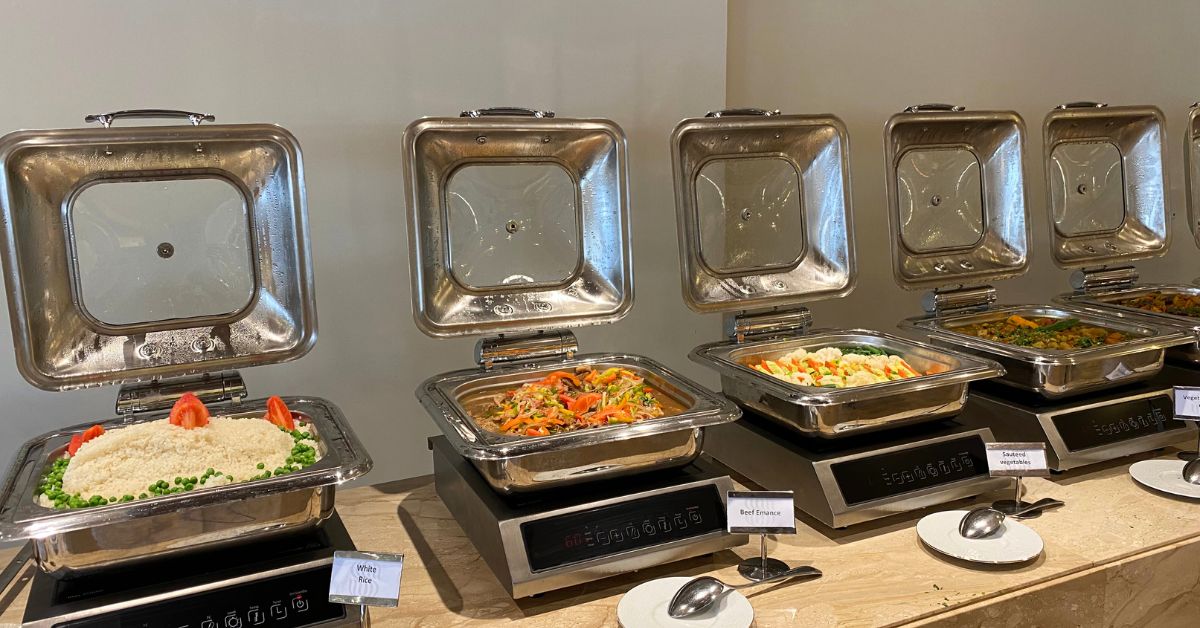

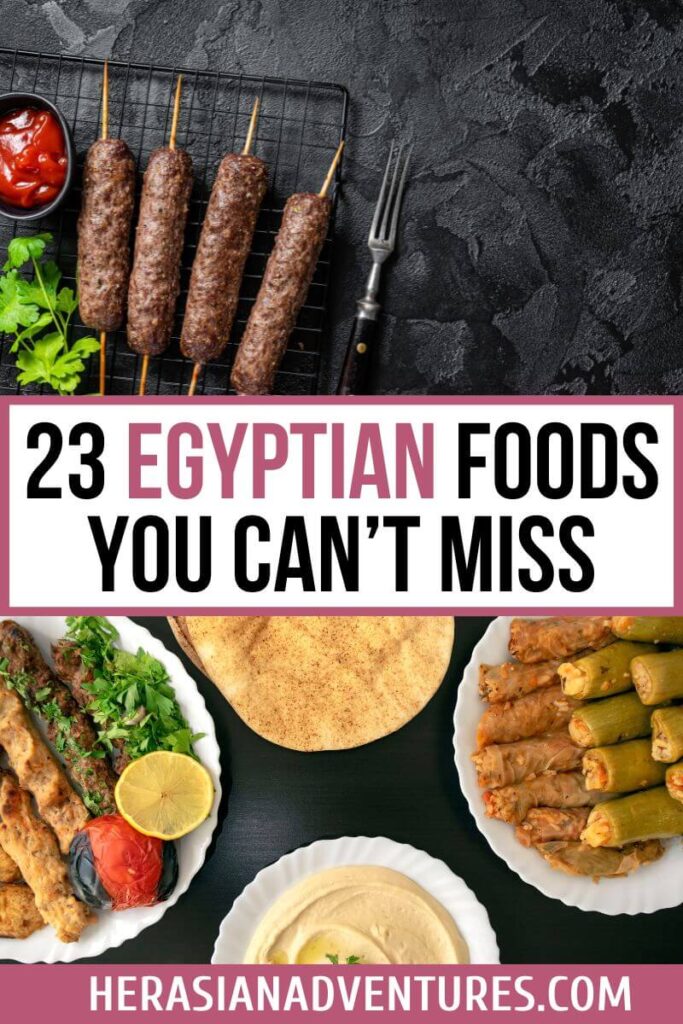
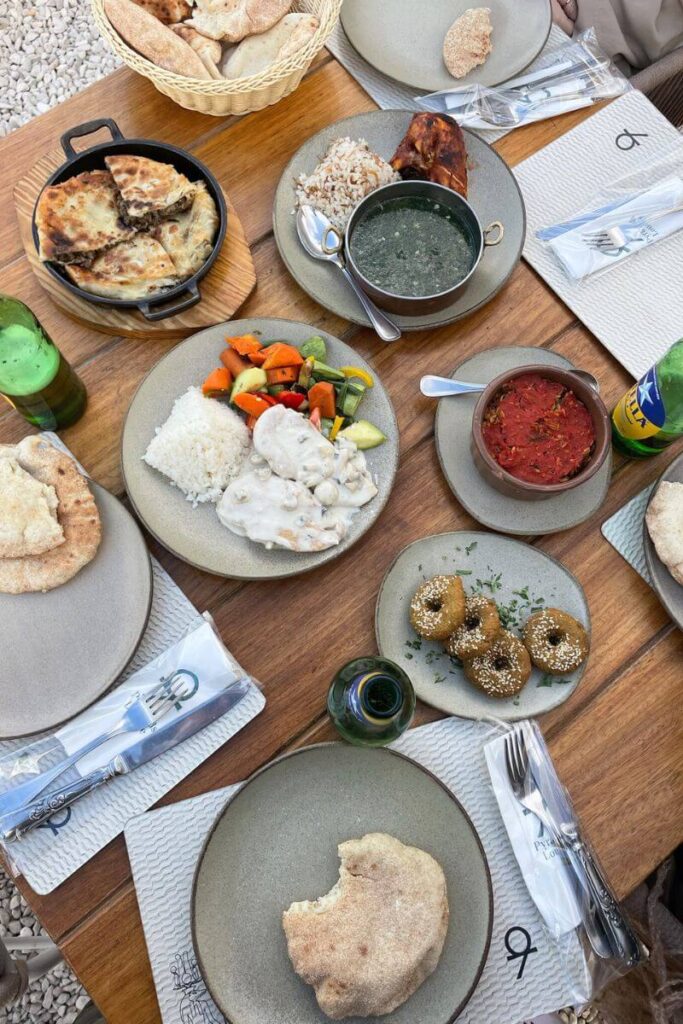

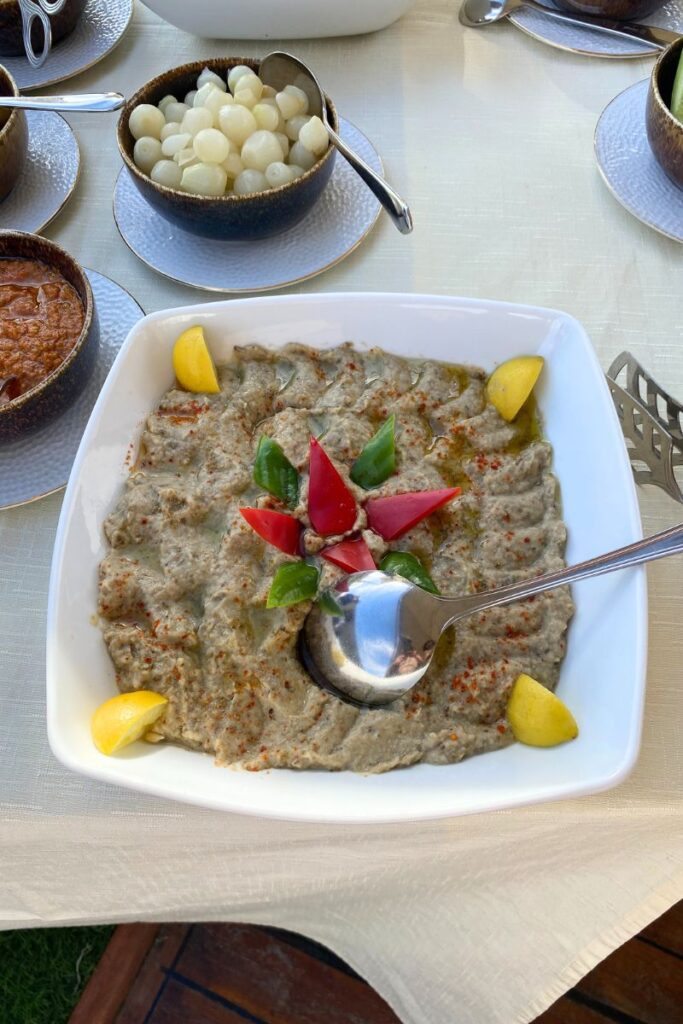
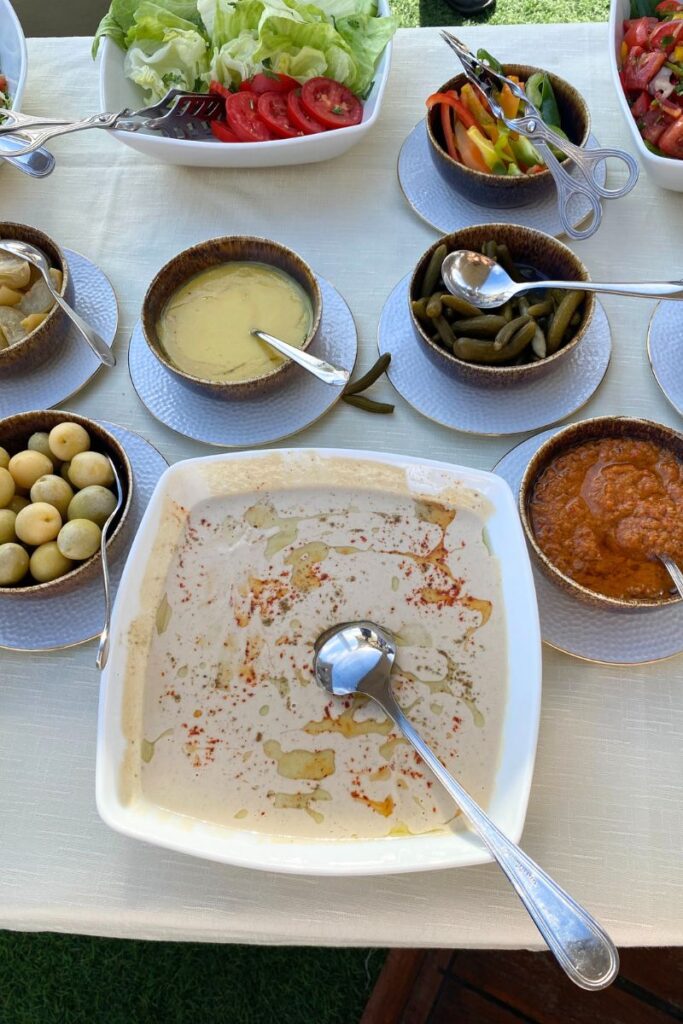
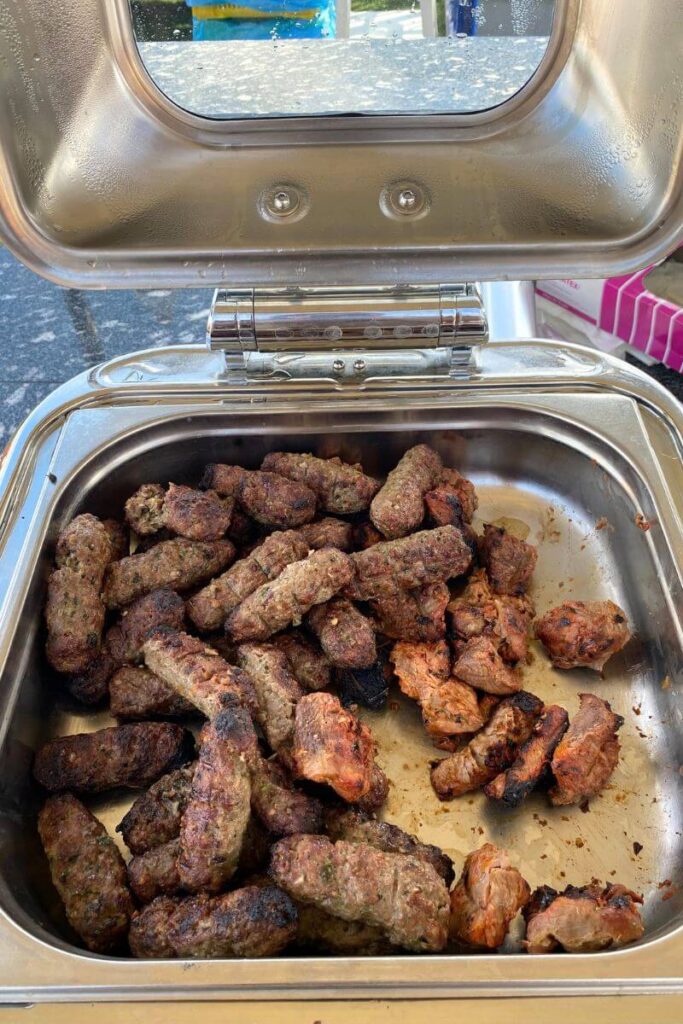
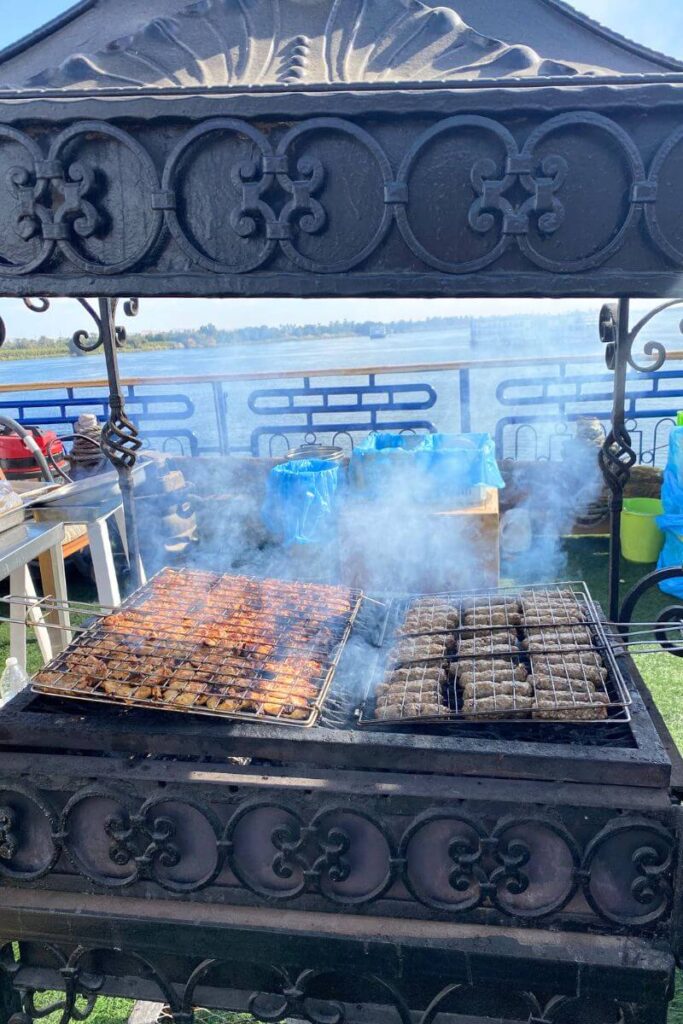
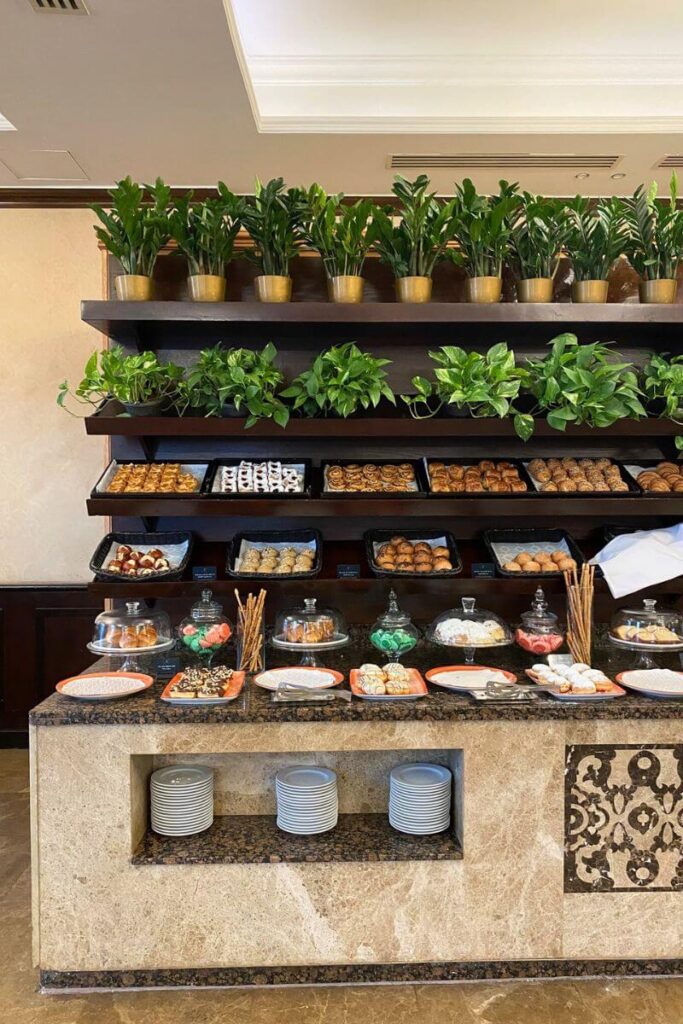
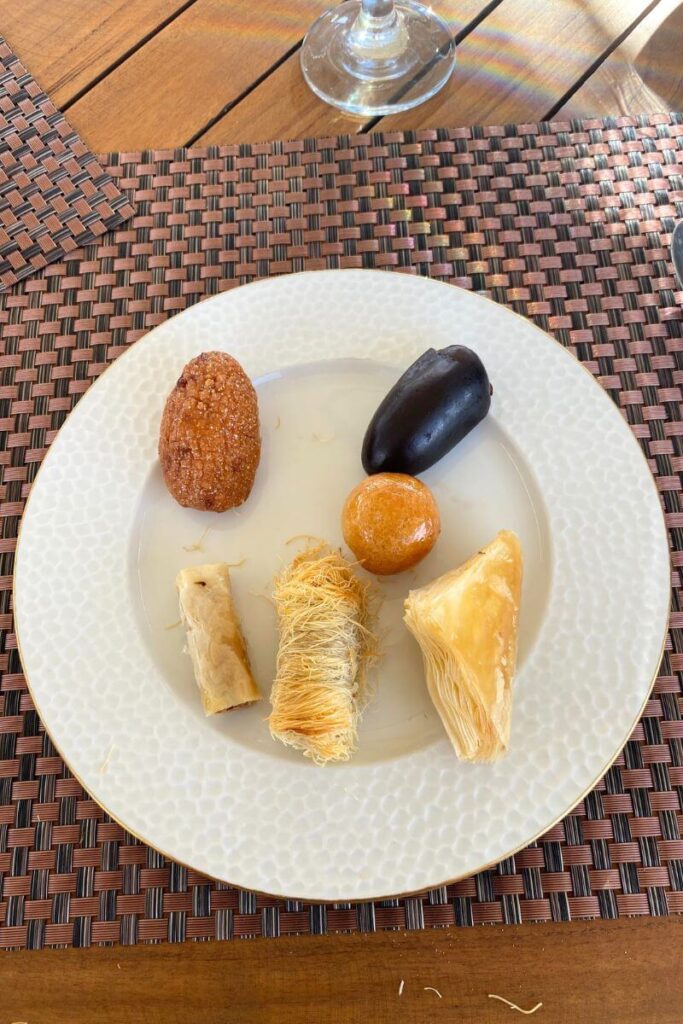
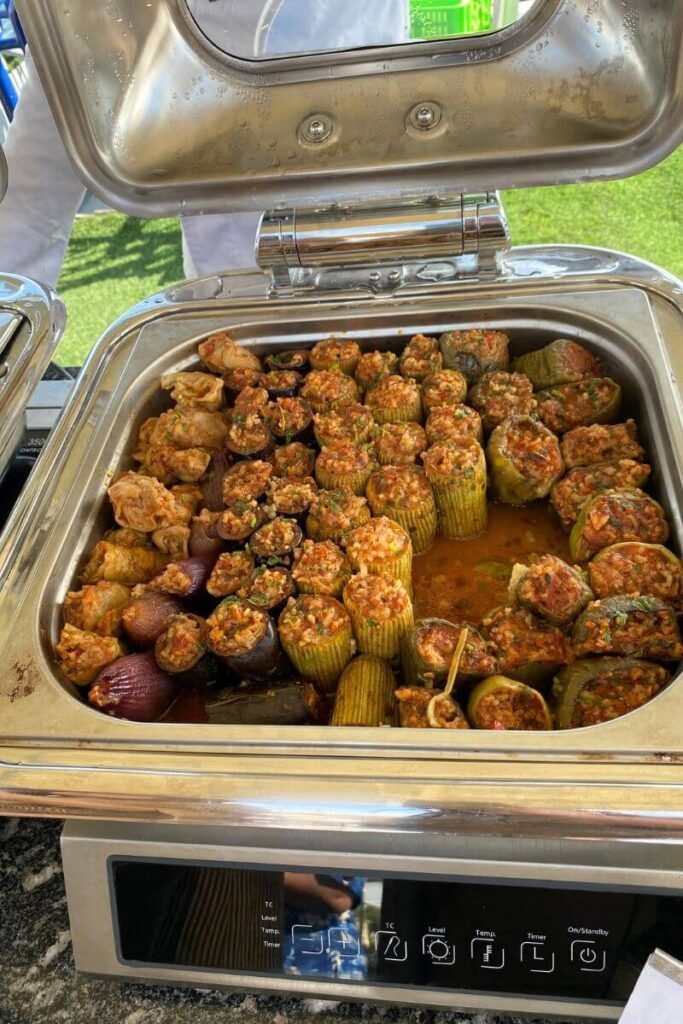
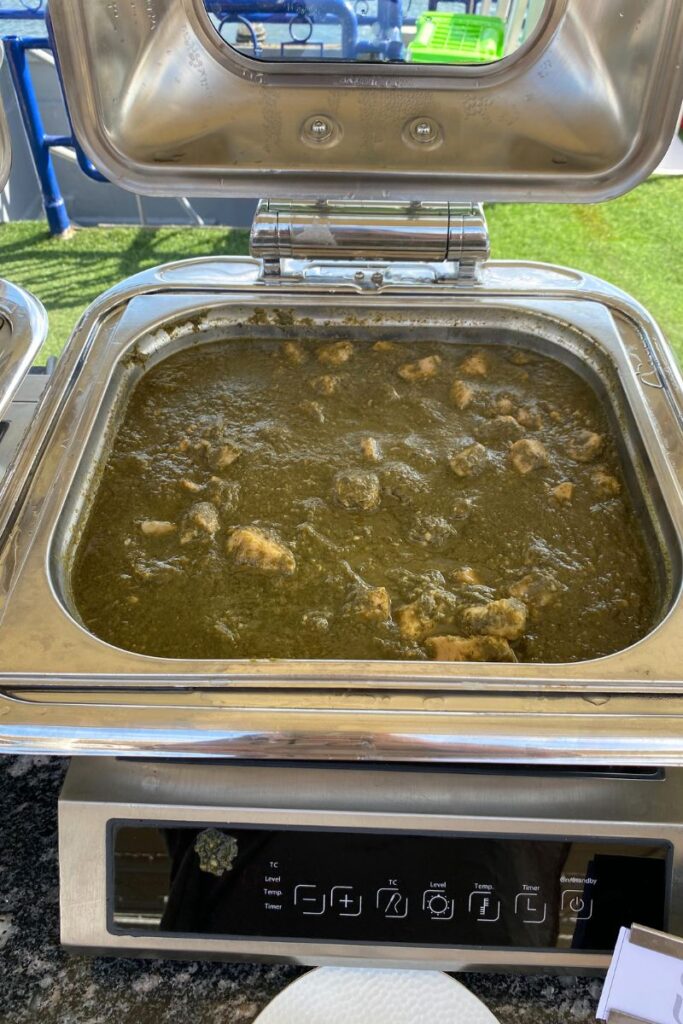
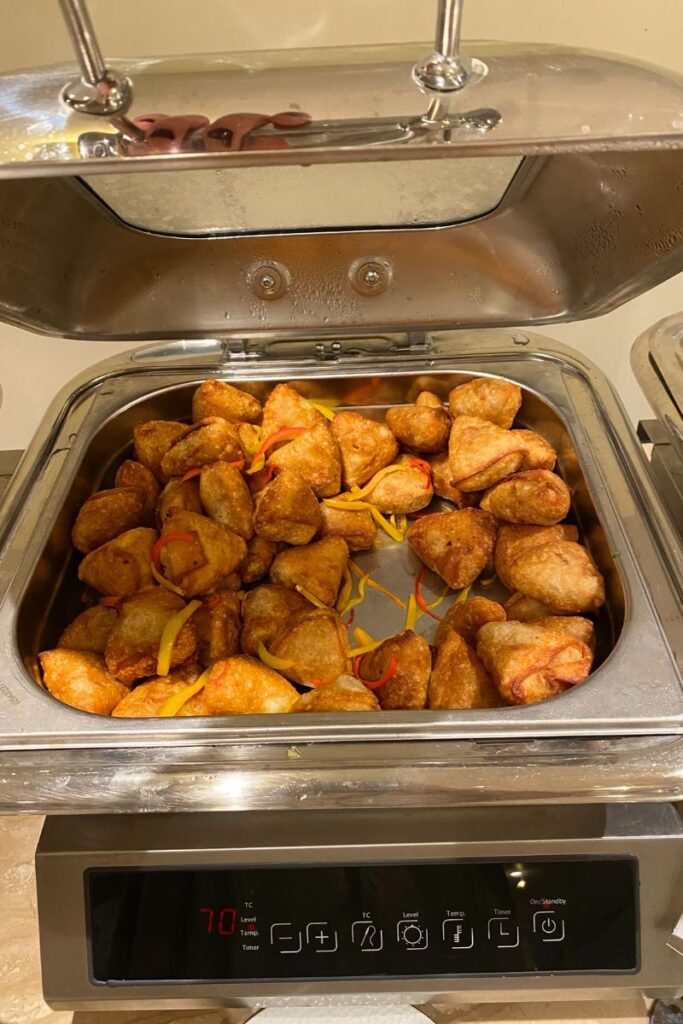
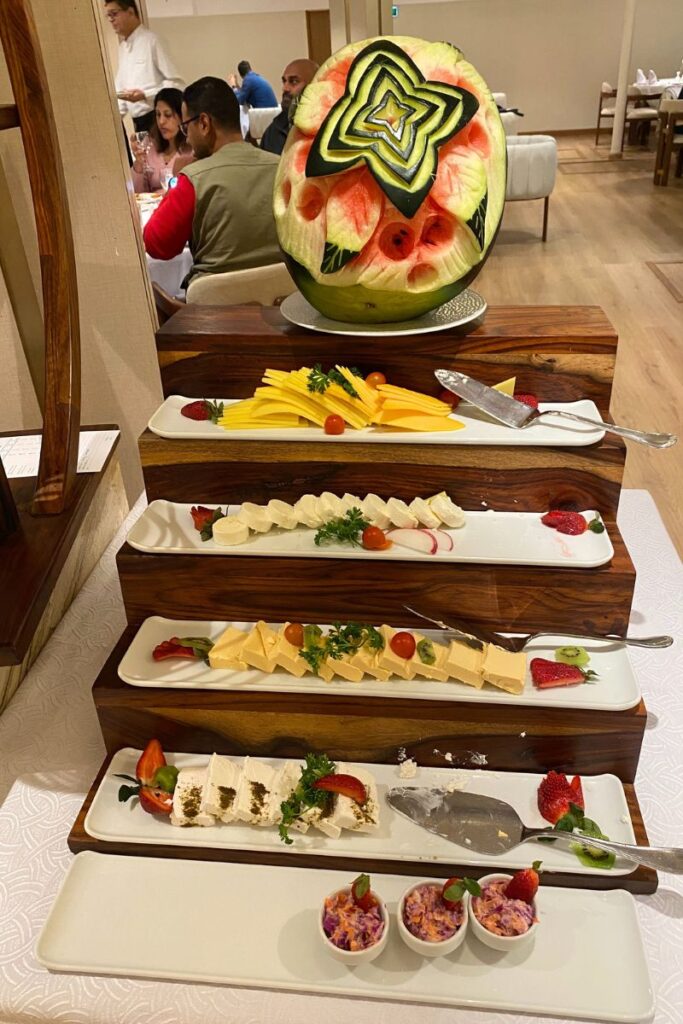
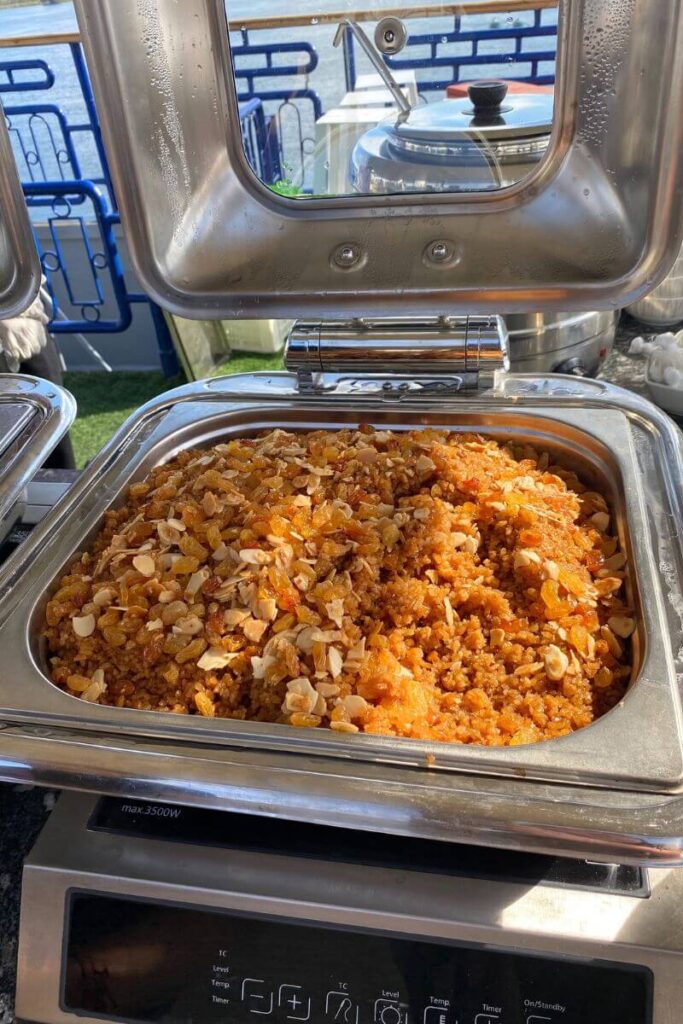



f5v9dc
nc3ecq